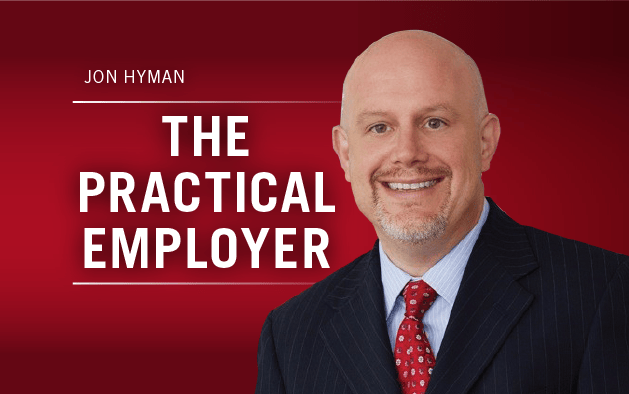Another day at the Society for Human Resource Management’s 2017 conference in New Orleans. Day 2 brought me a lot of opportunities to speak to HR professionals about everything from the skills gap to benefits strategy to financial wellness. Tropical Storm #Cindy is also coming in, so potentially we’ll all be stuck together for a much, much longer time. We’ll see!
These are some of the ideas I’ve come across day 2:
 Financial Wellness Over 20 Years: I spoke with Jeff Tulloch, vice president of MetLife’s PlanSmart program. MetLife has been developing this financial wellness platform over the past 20 years, and just in the past three years, they’ve seen a large spike in interest in this area, Tulloch said. What’s caused this spike, he added, is that employees are stressed and employers have realized that stress is a drain for everyone.
Financial Wellness Over 20 Years: I spoke with Jeff Tulloch, vice president of MetLife’s PlanSmart program. MetLife has been developing this financial wellness platform over the past 20 years, and just in the past three years, they’ve seen a large spike in interest in this area, Tulloch said. What’s caused this spike, he added, is that employees are stressed and employers have realized that stress is a drain for everyone.
What companies have been doing well with financial wellness is education, he said, but there are two more important areas that we’ll need to see moving forward: motivation and access. By motivation, he meant that HR practitioners could “be more courageous endorsers of what they offer and help their employees take the next steps.”
By access, he meant a wide range of access points for information and advice, not only digital. There’s also human interaction, like an on-site financial adviser or a call center someone can access during open enrollment.
“When we get those three things, education, motivation and access, we see that people are in the position to act,” said Tulloch.
A Little Nudge: Lazlo Bock, former senior vice president of people operations at Google/Alphabet gave a speech that, although not about health/wellness, did offer one tidbit of advice on wellness. He called it “nudging.” The idea behind it is that a small change in the work environment can make a larger impact and that businesses can nudge employees in the right direction. The trick is to not get too into micro-managing. You can’t remove employee choice, but you can lightly nudge them to make a choice that’s better for them.
Bock gave an example of an office based in New York. It offered healthy (nuts, fruit, etc.) and unhealthy snacks (M&M’s), all in opaque containers. The company made a small change in presentation and began putting the unhealthy snacks in yellow containers. The result was that employees consumed a significantly smaller number of calories in the following weeks. They were less likely to dig into the M&M’s in the differentiated, yellow containers than the opaque ones. The choice was still there, but perhaps they began thinking about their choice more when the healthy and unhealthy options looked different.
I don’t know if this same result would happen to any company who uses this exact opaque container/ yellow container model, but the idea behind it is solid.
New Legislation: Lisa Horn, director of congressional affairs and leader of SHRM’s Workplace Flexibility Initiative, spoke about a new work-flex bill being introduced to Congress. They worked with U.S. Rep. Mimi Walters, R-California, to craft it.
The bill is still being changed and tweaked, so I won’t go into specifics. Here’s the gist, though. It’s a workplace flexibility bill that does something about both paid leave and flexibility in the workplace. Currently, there is nothing on a national level addressing these, but many states and cities have their own individual rules, which causes problems for national companies with a presence in multiple cities or states.
In this bill, if an employer voluntarily chooses to adopt these standards, they will be deemed to have satisfied their state and local mandates. The idea behind the bill, Horn added, is that it would be more generous for employees than the state/local mandates.
I’ll be interested to see what happens with this and how far it gets. Also, what those TBD details are like how many days of paid leave an employee would get.
SHRM hopes to officially introduce it after Congress’ July 4 recess.
“HR is Like Golf”: I found this entertaining and something that honestly could apply to any job. This is what one man said when he was asked what he does when things get hard in HR. You can take 99 bad shots and one good shot, he said, and it’s that one good one that keeps you coming back to play golf.
Moving Forward from a Bad Rep: In one session, a woman said the hardest part of HR is overcoming a bad reputation, like with the bad press HR got in the Uber sexual harassment fiasco. She added that as an HR practitioner, every new organization she works at is an opportunity to tell a new HR story and change what HR looks like. Then the employees who work there will have a different impression and HR and carry that with them where they go next. “I can only control what my HR world looks like and what my people experience,” she said, mentioning the importance of starting small, focusing on your own organization and letting other proactive HR people do the same at their own company.
Related Content: SHRM 2017 Conference Kicks Off in New Orleans
Related Content: An Understandable Understated Farewell from SHRM’s CEO Hank Jackson
Related Content: Benefits Are a Large, Important Part of Total Compensation
Andie Burjek is a Workforce associate editor. Comment below or email editors@workforce.com. Follow Workforce on Twitter at @workforcenews.











